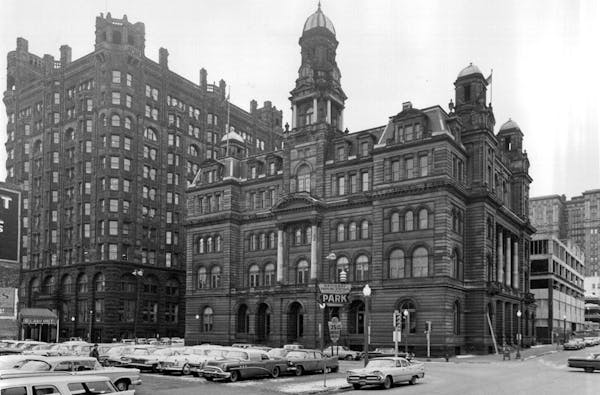At some point, people waiting on a downtown corner realized they were being bossed around by a disembodied order:
"Wait!"
"Wait!"
The Waitbots (my term for the audible walk signals) are designed to improve the accessibility of the corners, along with nubby plates that provide a tactile reminder that the sidewalk is about to end.
But they're just another noisy element of the modern urban soundscape, which also includes chatty parking ramps.
There's no consistency to the parking garage voice alerts in Minneapolis.
Sometimes the voice is nervous: "CAR APPROACHING!" Sometimes it's bored: "Caution, vehicle exiting," said in a voice that made it sound as if the company got one of the middle managers to record it after a long lunch. There's one on 6th Street in downtown Minneapolis that sounds downright Bostonian: "Cawtion, cah exitin'."
But the more ubiquitous the automated voices are in an urban area, the more we learn to ignore them.
Sometimes we hear, but scoff. When you're on a moving walkway at an airport, for example, a voice tells you that the walkway is ending. If someone is staring at their phone and does a face plant because the walkway comes to an end, well, that's what they deserve.
Of course, it's for the sight-impaired, like the parking garage alerts. But as long as everyone hears them, why not make them more interesting?
Instead of an East Coast accent, the "Cawtion, cah exitin' " voice should be recast in a regional accent.
"Oh, hey, there's a car, don't you know."
"Jeez, careful there!"
"Holy cow! How about that car, now."
Or perhaps Prince lyrics, licensed, of course, from the estate and repurposed for the moment. To the melody of "Purple Rain": "Guardrail raised, guardrail raised. I only want to warn you that the car's out once he pays."
We could ask local celebrities to voice them — TV anchors, radio DJs, politicians.
What we cannot have, alas, is the voice of Barbara Flanagan advising us to take care.
Flanagan, a longtime Star Tribune columnist, died this week. Her passing reminds us that the current state of the city of Minneapolis is partly because we listened to her voice, and partly because we ignored it.
She understood what makes streets vital and interesting, and it isn't the voices of robots cautioning empty street corners.
It's conversations in cafes, people chatting as they sit on a bench on the Nicollet Mall, watching the passing parade. It's the long-silent voices you hear when you study an old facade, and imagine the lives of the people who lived and worked behind the weathered stone walls.
In the 1960s, Minneapolis was busy "improving" itself by demolishing old buildings wholesale. Flanagan, an advocate for respecting and restoring the past, lamented the destruction of the city's history for parking lots.
One of her 1967 columns told the history of Zier Row, a structure grotesque by the standards of the time, because it was fussy, gabled, ornate. It went down for a parking lot by the Normandy Inn.
There's been plenty of damage done downtown, but there still might be a few old structures threatened by more improvement. Which is why it would be nice to have Flanagan's voice come out of a speaker from time to time, when we think of tearing down what's left of our history just because we can.
"Wait!" she'd warn.
"Wait!"
James Lileks • 612-673-7858 @Lileks
